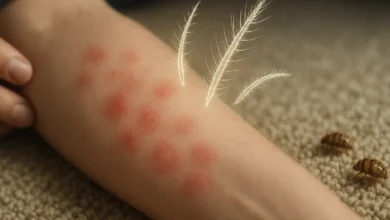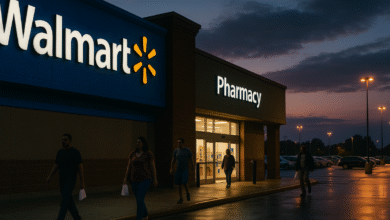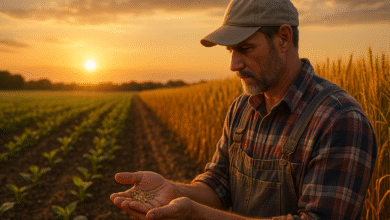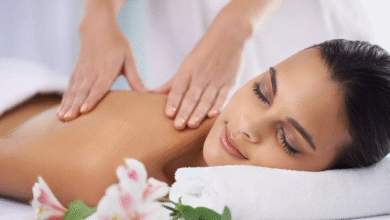How to make weed brownies with weed — a safety-first and legal alternatives guide
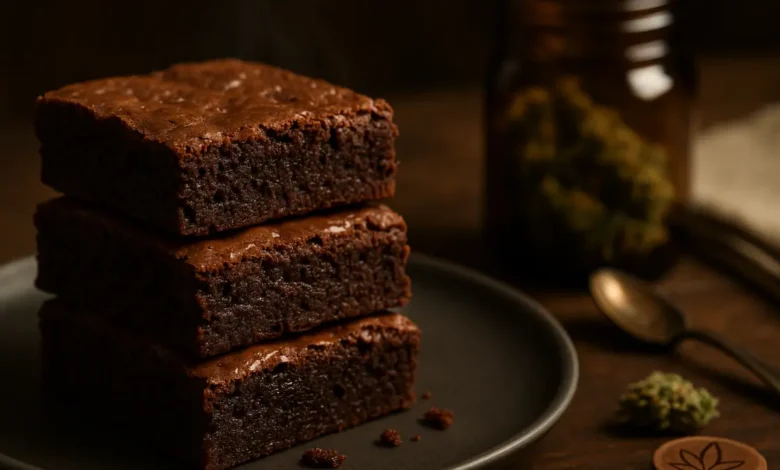
A safety-first guide to edible cannabis: learn the legal landscape, science, harm reduction, and lawful CBD brownie alternatives with label reading tips and consumer checklists.
People search for this phrase for many reasons. Some are curious about edible cannabis generally, some are looking for safer ways to enjoy cannabinoids, and some want to understand the law and science behind edible products. This article covers those topics thoroughly and responsibly. It helps you understand what the phrase means in different contexts, how edible products behave biologically, why safety and regulation matter, and how to pursue lawful options like CBD-infused baked goods where permitted. Read on for practical guidance, consumer checklists, and a legal, delicious alternative you can make at home in permitted places.
What people mean by the phrase and why nuance matters
When someone types that phrase into a search engine they often mean one of several things. Sometimes the intent is culinary curiosity about baking and flavors. Sometimes it is medical or therapeutic interest in cannabinoids. Other times it is a desire to know how edibles behave in the body and how to dose them safely. Importantly, the phrase also raises immediate legal and safety questions. Laws vary widely by country, state, and locality. Because the legal landscape is uneven and changing, responsible resources separate curiosity from instruction that might be unlawful.
A careful reader will notice this article does not provide steps to produce or concentrate psychoactive cannabis in ways that may be illegal in many places. Instead it aims to inform, reduce harm, and offer lawful, practical alternatives for people who want an edible experience without legal risk. For those who live in regulated markets and seek licensed products, the safest path is to purchase from tested, labeled, and regulated sources.
The legal picture in plain language
Cannabis law has many faces. In some regions, regulated adult use permits licensed production and sale of edible products under tightly controlled rules. In other regions only medical cannabis is allowed under specific clinical supervision. Many places still prohibit possession, manufacture, or distribution of psychoactive cannabis entirely. Because rules change and differ by place, always check the authoritative government source in your area before buying, possessing, or attempting to make any psychoactive product.
Where regulation does exist, it tends to focus on consumer protections. Examples include limits on cannabinoid content per serving, mandatory lab testing, child resistant packaging, and clear labeling. Those safeguards help prevent accidental ingestion, overconsumption, and exposure to contaminants. If you live in a regulated jurisdiction and want an edible, choosing a licensed product with batch testing is the most responsible consumer choice.
Why safety and harm reduction are essential for edible cannabis
Edible products behave differently than inhaled cannabis. The body metabolizes cannabinoids in a way that delays onset and prolongs duration of effect. That delay leads many inexperienced users to take more, believing nothing has happened, which can result in uncomfortable or distressing overconsumption. Because effects may come on gradually and last much longer, dose control and patience are the two best safety practices.
Other risks include accidental ingestion by children or pets, or use by people for whom cannabis is unsafe. To reduce harms, public health guidance emphasizes secure storage in child resistant packaging, clear labeling, accurate potency information, and avoiding mixing with alcohol or other sedatives. In short, safety practices matter more for edibles than for many other product categories.
The science behind edible effects, explained simply
Cannabis plants contain numerous chemical compounds called cannabinoids. Two commonly discussed cannabinoids are delta nine tetrahydrocannabinol and cannabidiol. Delta nine produces the intoxicating effect most people associate with cannabis. When cannabinoids are eaten, they pass through the digestive system and are metabolized by the liver, which alters their chemical form and can intensify or prolong effects compared with inhalation.
This metabolic pathway explains why edible experiences can be stronger and longer lasting for some people. It also means individual differences in metabolism, body composition, and prior exposure change how people respond. For these reasons clinicians and harm reduction experts urge a cautious approach, especially for first time use or when switching product forms.
Lab testing, labeling, and why regulated products matter
In regulated markets, edibles are subject to lab testing for cannabinoid potency and contaminants such as residual solvents, pesticides, and heavy metals. Producers must label serving sizes and total cannabinoid content per package so consumers can make informed choices. Those safety nets are why buying from licensed retailers is safer than relying on unknown or informal sources.
When evaluating a product, look for a certificate of analysis from an independent lab that shows the cannabinoids present, their amounts, and contaminant testing results. If a seller cannot provide that documentation, consider it a warning sign. Transparency and third party testing are the consumer’s best protections.
Safe and legal alternatives you can try
If your goal is to enjoy the flavor and social rituals associated with brownies without breaking the law, there are several lawful alternatives:
- Non intoxicating hemp derived cannabidiol products where allowed. These provide mellow effects for some people and avoid intoxication for most doses commonly used in food. Check local rules and choose products with lab testing.
- Flavored or herbal brownies that celebrate texture and taste without cannabinoids. You can make exceptional confections using premium chocolate, nuts, spices, and creative finishes.
- Licensed edible products from a regulated dispensary where legal. These products are lab tested, portion controlled, and labeled for safe use.
Below you will find a legal CBD-based brownie option designed for places where such products are permitted. If you consider that option, confirm local legality and rely on tested CBD ingredients from reputable suppliers.
Legal CBD brownie option — a kitchen friendly recipe for permitted places
This section presents a lawful, non intoxicating alternative that uses a tested CBD oil or CBD infusion where permitted. It includes clear labeling for dosing and an emphasis on safety. This is not a recipe for psychoactive THC products and should only be used where CBD food use is legal.
Begin by choosing a high quality, lab-tested CBD oil clearly labeled with cannabinoid content per milliliter. Use that information to calculate an appropriate serving size. A small serving that contains a modest amount of cannabidiol is a sensible starting point for many adults who wish to try a non intoxicating cannabinoid.
When preparing the brownies, incorporate the CBD oil according to the manufacturer’s instructions for culinary use, and ensure even mixing to create consistent servings. Portion the finished pan into clearly labeled pieces and store securely in airtight containers with child resistant closures where available. Always keep the product in its original packaging with the certificate of analysis or batch code tucked with the storage container for future reference.
The final brownie should prioritize flavor and texture. Use quality chocolate and fresh ingredients, and consider adding complementary flavors like a hint of espresso, citrus zest, or toasted nuts to elevate the sensory experience without relying on cannabinoids for the effect.
How to read CBD labeling and certificates of analysis
A certificate of analysis from an accredited laboratory shows exactly what is in a CBD product. It lists cannabinoid breakdown, including cannabidiol amount, and screens for contaminants. When you buy a CBD culinary ingredient, confirm the batch code on the bottle matches the lab report. This step ensures you have the correct potency and that contaminants have been tested.
Good labeling will also state recommended culinary use, maximum recommended daily amounts, and any allergen information. If a manufacturer does not provide these details, favor other reputable suppliers who do.
A consumer checklist for safe, lawful edible use — How to make weed brownies with weed the right way to stay informed
- Verify local laws regarding cannabinoids before purchasing or using any cannabinoid containing food.
- Buy only from reputable suppliers who publish third party lab results.
- Start with a modest serving that matches the labeled potency of the ingredient.
- Never serve cannabinoid containing food to children, pregnant people, or pets.
- Store products securely and label them clearly.
- Avoid mixing cannabinoids with alcohol or other sedatives without professional guidance.
These precautions reduce risk and make it more likely your experience will be pleasant and controlled.
A helpful comparison table
| Option | Typical consumer experience | Key consumer protection | Main limitation |
|---|---|---|---|
| Licensed edible from regulated retailer | Predictable effects if labeled correctly | Lab testing and controlled serving sizes | Only available where regulation exists |
| Homemade CBD brownies using tested oil in permitted places | Milder, non intoxicating for most users | You control ingredients and labeling | Requires careful dosing and legal compliance |
| Homemade products using unverified sources | Unpredictable effects and risks | None typical | Legal penalties and unknown contaminants |
This table helps illustrate why choosing lab tested ingredients and following legal rules matters.
Common myths and how to spot them
Myth: homemade products are always the same as licensed ones. Reality: licensed products have safety checks and testing that homemade batches often lack.
Myth: cannabidiol is harmless in every circumstance. Reality: it can interact with medications and is not suitable for everyone. Check with a healthcare provider when in doubt.
Myth: edible effects are immediate. Reality: onset is delayed for ingestion forms and duration can be long.
Separating myth from evidence is essential to safer use and better decisions.
Quotes from thoughtful voices
“Clear labeling and independent testing are the consumer’s best defense against unintended effects or contamination.” — a public health professional.
“For edible products, patience is the best safety measure: wait and only repeat after a reasonable interval.” — a clinician experienced with cannabinoid pharmacology.
These statements sum up the guiding principles of caution and informed choice.
Frequently asked questions
Is it legal to make edible cannabis at home?
That depends entirely on where you live. Some places allow home cultivation and personal use under regulated frameworks, while others prohibit manufacture or possession of psychoactive cannabis. Consult local regulations and follow them.
Can I use CBD oil in baking?
In regions where culinary use of cannabidiol is lawful, you can use lab tested CBD oil following the manufacturer’s culinary guidance. Calculate serving potency carefully and label servings clearly.
How are edibles different from inhaled cannabis?
Edibles are ingested and metabolized in the digestive system and liver, which often delays onset and prolongs duration compared with inhalation. This difference affects dosing strategy and risk.
What should I do if someone has a bad reaction?
Provide reassurance, keep the person in a calm safe space, and seek medical attention if symptoms are severe or distressing. For mild distress, hydration and rest usually help until effects subside.
Where can I find lab results for a product?
Reputable suppliers publish certificates of analysis online or provide them on request. Confirm batch codes match the report.
Final practical notes for informed consumers
If your interest is culinary and creative, explore high quality, non cannabinoid ingredients to perfect texture and flavor. If your interest is in cannabinoids themselves and you live in a regulated market, choose licensed products with clear lab testing. If you live where cannabinoids are restricted or prohibited, do not attempt manufacture or distribution of psychoactive products. Legal compliance and safety protect you and the people around you.
Conclusion
Curiosity about edibles is understandable, but it must be balanced with lawfulness and safety. Where regulation exists, lab tested licensed products are the safest route. Where those options are not available, lawful alternatives like CBD products in permitted jurisdictions or cannabis free culinary creativity provide satisfying and legal choices. Prioritize transparency, testing, secure storage, and cautious dosing to reduce risk.


